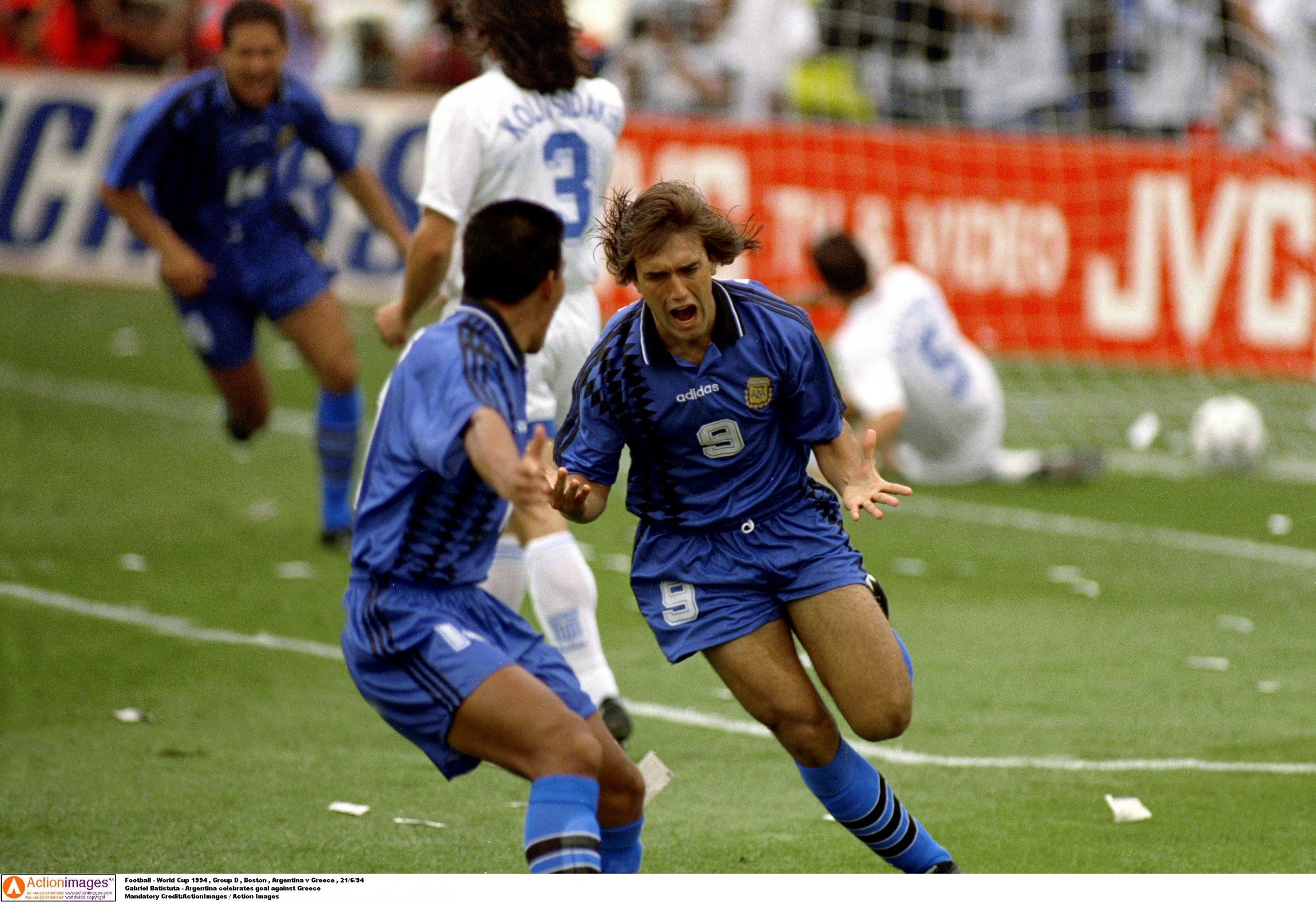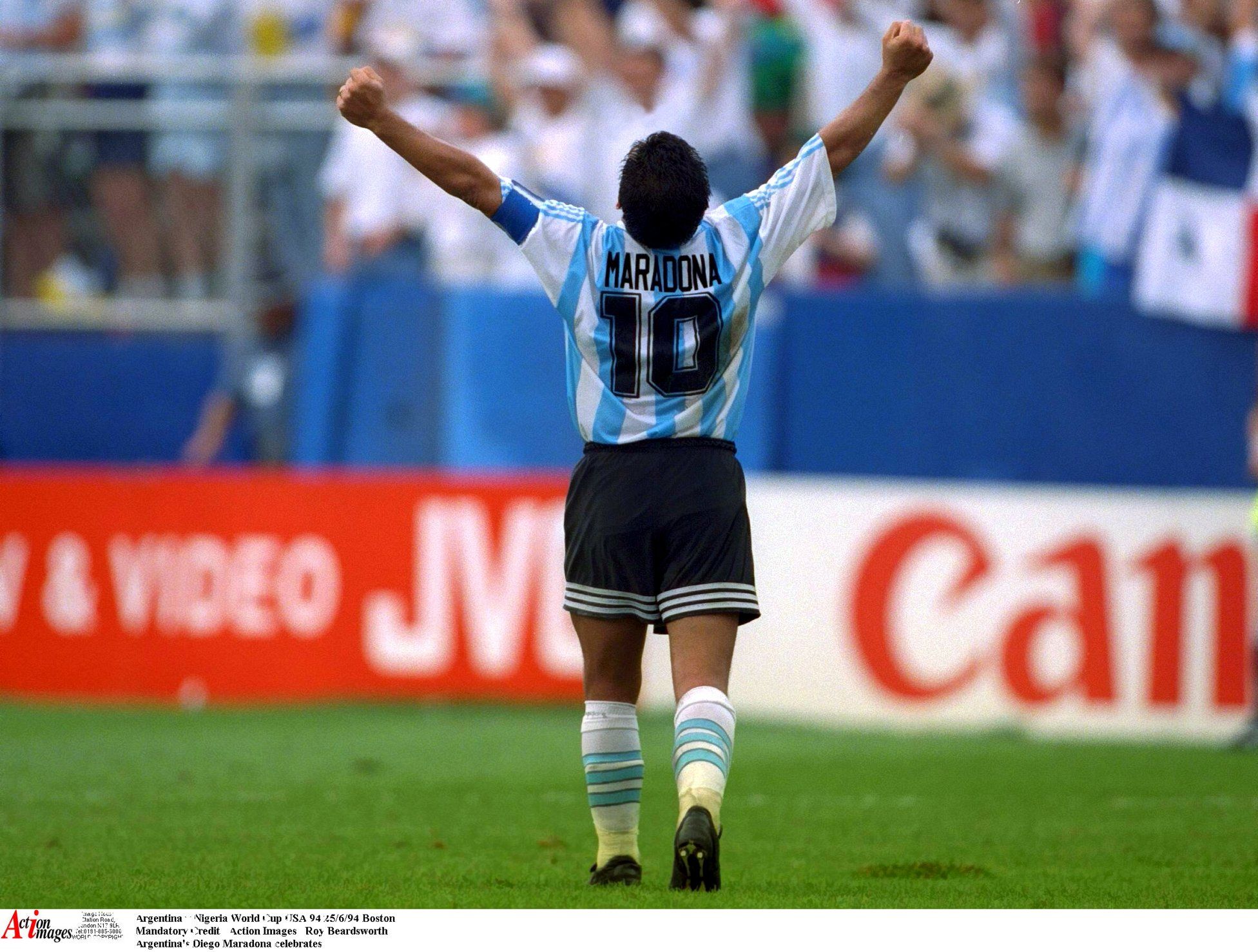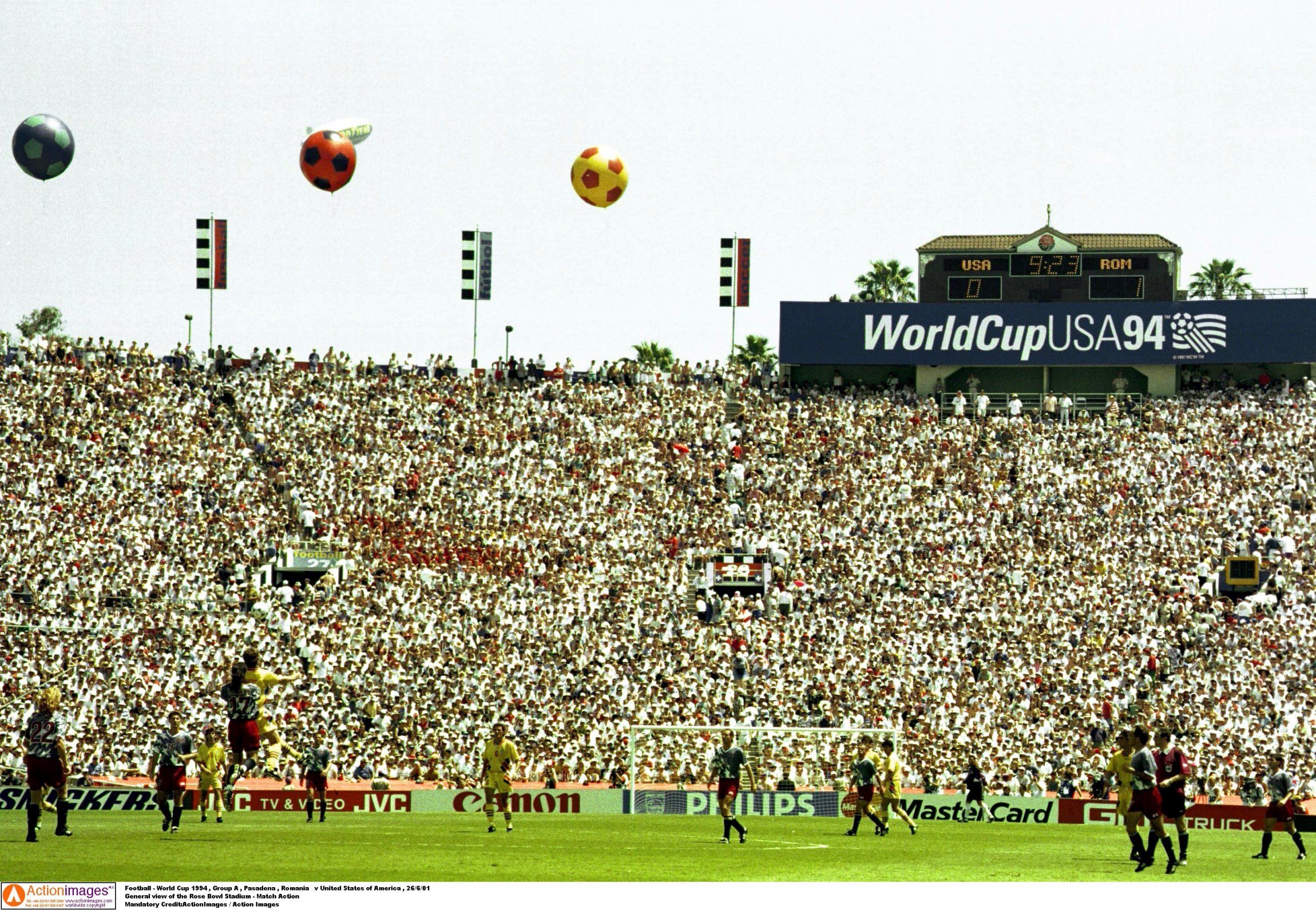[ad_pod ]
The 1994 World Cup finals began with Diana Ross missing a penalty and ended with the Divine Ponytail doing the same.
In the four weeks in between these events – one funny, the other seismic – the greatest player who ever lived was banned from competitive football for fifteen months after failing a drugs test while a Colombian defender signed his own death warrant by scoring an own-goal.
Meanwhile, a 42-year-old Cameroonian, who was rumoured to be several years older in reality, wheeled away in timeless delirium after scoring against Russia. Oh, and modern football as we know it was born too, exploding onto our screens and dipping into our pockets and telling us over and over again, through hype and hysteria, that it was infinitely bigger and better and more exciting than its previous incarnation sponsored as it was by Coca Cola, and McDonalds, and Mastercard, you name it.
That’s a lot of big themes to hang on a single tournament. There’s a birth and a death, and a fall from grace, with some divine comedy and reinvention thrown in too. Thankfully, 25 years ago this summer the most significant World Cup of our lifetime took place in America - and they don’t do small.
For a long time however they weren’t prepared to do football at all. From generation to generation ‘soccer’ had been relegated to a kid’s pastime – albeit a very popular one – because how could it be viewed as a real sport when a tie could occur after ninety minutes and everybody went home? Culturally it is enshrined in every American high school and every American heart that in life, love and sport there can only be a winner and a loser, leaving no room for a middle ground.
FIFA though, acutely aware of the vast financial rewards in breaking one of the last remaining resistant territories to their product, were determined to change all that and in 1988 they duly awarded the US as hosts six years hence.
It is fair to say that the decision did not go down well with one journalist comparing the unlikely coupling to “holding a major skiing competition in an African country” while across UK pubs a rumour took flight that they planned to expand the goals to ensure greater score-lines.
Watch International Football Live Streams With StreamFootball.tv Below
Yet in the event there was very little bastardisation, with any razzmatazz and American hoopla reserved for off the pitch, such as the extraordinarily OTT opening ceremony in Chicago that saw Oprah Winfrey emceeing and Diana Ross spooning a sitter from a few yards out that was supposed to ‘break’ the goal.
Once the action began an intrigued American audience watched on respectfully while television networks even forewent inherent habits and scrapped ad breaks for consecutive forty-five minute spells. They did all this out of curiosity. To see what all of the fuss was about.
And boy was there a fuss. Just a few games in scandal hit when Diego Maradona tested positive for five variants of ephedrine and frankly anyone who witnessed his manic snarl into the camera after scoring against Greece a week earlier could have saved the drug testers a needle.
In Group A a misjudged slice into his own net against the USA by Colombia’s Andres Escobar didn’t seem like anything too consequential at the time beyond a footballing concern. That was until a week later when, on returning home to Medellin, the 27-year-old defender was slain by six bullets outside of a bar, the ‘hit’ reputedly ordered by gangsters who had bet and lost heavily on the match.
Just prior to this awful waste of life Roger Milla was the epitome of life-affirmation, as he celebrated a consolation goal with as much vigour as his creaking bones allowed, while elsewhere goals rained in with high-scoring games almost the norm aside from the final itself that eked to pens and Roberto Baggio’s nadir.
In purely a sporting sense it was by and large a brilliant, eventful festival and was it as a result of this that the American audience so willingly embraced the tournament?
That is hard to say but certainly looking back now the experiment of taking soccer to the Americas can be considered a huge success. Record crowds attended the games - 3.6 million filled the vast stadiums throughout the tournament - while the competition can also take some credit for leading to the growth of the MLS and an increase in participation both playing and watching.
Four years ago a poll conducted by the Washington Post determined that ‘soccer’ is set to continue rising in popularity stateside.
More pertinent to ourselves the 1994 World Cup was also in many ways the beginning of how football is today. We all like to view Italia 90 through a nostalgic lens – Gazza’s tears and all – but in reality it was a moribund tournament where back-passes to the keeper stifled excitement. The following tournament heralded the new forbidding rule change that ensured the game quickened in pace and drama, and with the emergence of young charges such as Ronaldo, Batistuta and Bergkamp, it had the perfect modern exponents of the game to highlight the rule’s benefits.
Furthermore it was the first World Cup to have player’s names printed on the back of shirts; the first tournament to have three points for a group win; it hosted the first World Cup match played indoors.
It was an accelerated evolution and sadly that goes too for the commercial side as big business sunk its teeth into the game’s soul and affiliated themselves as ‘official partners’. It’s not a coincidence that the USA were the first country to profit enormously from hosting the event. It’s not a coincidence that FIFA have been so keen to venture into other unexplored territories ever since, nations and continents ripe for plucking.
Twenty five years ago this summer football headed west to conquer a new world. It returned repackaged, shinier and updated. Whether that is a good thing or a bad thing is entirely down to choice.



